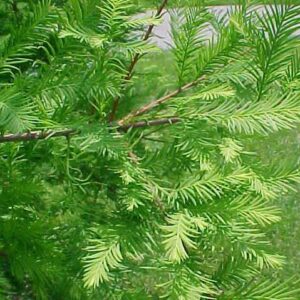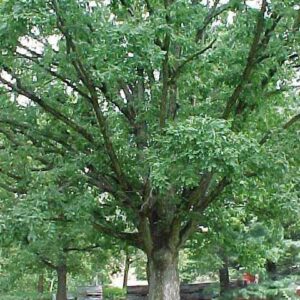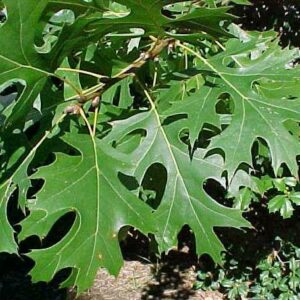Persimmon (Diospyros virginiana)
$30.00
Out of stock
Share
Description
Culture
Easily grown in average, dry to medium, well-drained soils in full sun to part shade. Somewhat wide range of soil tolerance, but prefers moist, sandy soils. Drought tolerant. Promptly remove root suckers unless naturalized effect is desired. Female trees need a male pollinator in order to set fruit.
Noteworthy Characteristics
Persimmon is deciduous tree with a rounded oval crown that grows to 35-60? tall. It is native from Connecticut to Kansas south to Florida and Texas. In Missouri, it typically occurs in rocky or dry open woods, limestone glades, prairies, thickets, abandoned fields and along roadsides (Steyermark). It is one of the easiest trees to identify in winter because of its distinctive thick, dark gray bark that is broken into rectangular blocks. Plants are usually dioecious (separate male and female trees), but some trees have perfect flowers. Fragrant, white to greenish-yellow flowers bloom in late spring, with the male flowers appearing in clusters and the female flowers appearing solitary. Edible persimmon fruits (1-2? in diameter) mature in fall to an orange to reddish-purple color, and may persist on the tree into winter. Ovate to elliptic leaves (2-6? long) are glossy dark green above, and turn yellowish-green (infrequently reddish purple) in autumn. Persimmon fruit is quite astringent when green, but upon ripening becomes sweet and may be eaten off the tree. Fruits are commonly used in syrups, jellies, ice creams or pies. Ripe fruits are too soft for shipping/sale. Persimmon leaves can be used to make teas. Persimmon is a member of the ebony family. The wood is extremely hard and has been used to make golf club heads, billiard cues and shoe lasts. Genus name comes from Greek dios (divine) and pyros (wheat or grain) meaning divine fruit.
General Use
Ornamental landscape tree that produces an edible food crop.
Problems
No serious insect or disease problems. Leaf spot may occur.
Additional information
| size | 15-gallon, 3-gallon, 7-gallon |
|---|
Related products
-

Bald Cypress (Taxodium distichum)
$30.00 – $90.00 Select options This product has multiple variants. The options may be chosen on the product page -

Chinkapin Oak (Quercus muehlenbergii)
Select options This product has multiple variants. The options may be chosen on the product page -

Shumard oak (Quercus shumardii)
$30.00 Add to cart -

Hazelnut (Corylus americana)
$30.00 Add to cart


